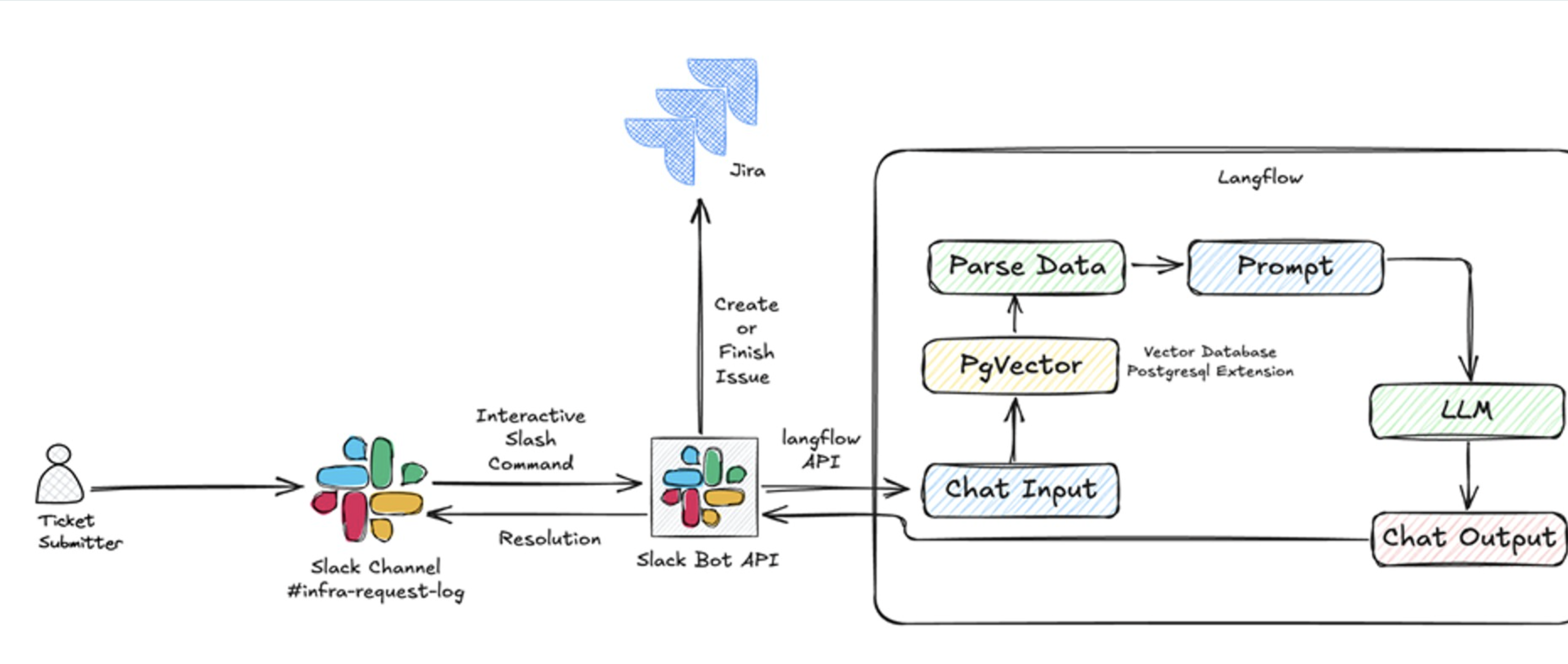The Challenge: Drowning in Tickets

Our infrastructure team has been juggling ~1,300 request logs, eating up 50% of their daily time.
With recent team size reductions, the pressure is mounting, leading to:
- Slower response times
- Increased workload per engineer
- Team burnout and decreased morale
- Less time for innovation and strategic work
The Solution: AI-Powered Ticket Automation
By automating first-level ticket handling and leveraging past resolutions through Retrieval-Augmented Generation (RAG), we’re transforming how our team operates.
What is RAG?
RAG (Retrieval-Augmented Generation) combines:
- Retrieval: Finding relevant past solutions from our knowledge base
- Generation: Creating contextual responses using AI
- Augmentation: Enhancing AI responses with historical data
Implementation Strategy
Knowledge Base Creation
- Indexed all historical tickets and resolutions
- Categorized common issues and solutions
- Created searchable documentation database
AI Model Integration
- Implemented natural language processing for ticket classification
- Trained models on our specific infrastructure patterns
- Set up automated response generation
Workflow Automation
- Auto-categorization of incoming tickets
- Intelligent routing to appropriate team members
- Automated first-level responses for common issues
Results: Game-Changing Impact
Reducing manual effort - 50% reduction in time spent on routine tickets
Speeding up response times - Average response time improved from hours to minutes
Empowering engineers to focus on innovation - More time for strategic infrastructure improvements
Boosting team morale and efficiency - Less repetitive work, more meaningful contributions
Technical Architecture
graph TD
A[Incoming Ticket] --> B[AI Classifier]
B --> C{Ticket Type}
C -->|Common Issue| D[RAG System]
C -->|Complex Issue| E[Human Engineer]
D --> F[Knowledge Base]
F --> G[Auto Response]
G --> H[Ticket Resolved]
E --> I[Manual Resolution]
I --> J[Update Knowledge Base]
Key Technologies Used
- Large Language Models for natural language understanding
- Vector Databases for efficient similarity search
- Machine Learning for ticket classification
- API Integration with existing ticketing systems
- Monitoring & Analytics for continuous improvement
Lessons Learned
- Start Small: Begin with the most common, repetitive tickets
- Human in the Loop: Always have human oversight for complex issues
- Continuous Learning: Regularly update the knowledge base with new solutions
- Measure Impact: Track metrics to demonstrate value and identify improvements
Future Enhancements
- Predictive Analytics: Anticipate issues before they become tickets
- Self-Healing Infrastructure: Automatic resolution of common problems
- Advanced NLP: Better understanding of context and nuance
- Integration Expansion: Connect with more tools in our DevOps pipeline
Download Technical Documentation
For detailed implementation guidelines, architecture diagrams, and code examples, download our comprehensive technical documentation:
📄 Download Technical Implementation Guide (PDF)
This document includes:
- Detailed system architecture
- Implementation code samples
- Configuration examples
- Performance metrics and benchmarks
- Troubleshooting guide
Conclusion
This approach revolutionizes how we work, enables smarter scaling, and keeps our infrastructure rock-solid.
The combination of AI and human expertise isn’t about replacing engineers—it’s about empowering them to focus on what they do best: solving complex problems and driving innovation.
This post shares our real-world experience implementing AI automation in infrastructure operations. Results may vary based on your specific environment and use cases.